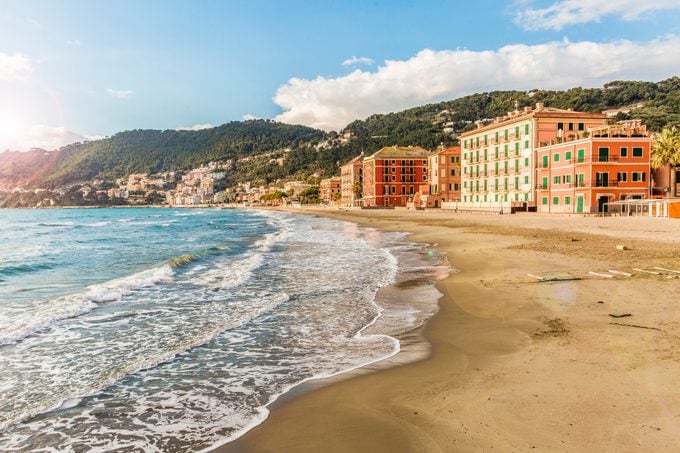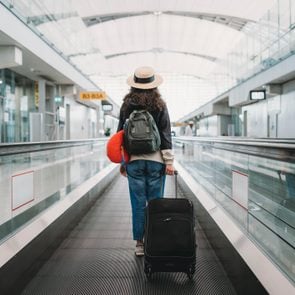The Best Time to Travel to Italy to Take in the Sights Without the Crowds
Updated: May 16, 2024

There's no wrong time to see Italian sights and cities, but if you know the best time to travel to Italy, you can vacation with fewer tourists
Italy is one of those places people dream of visiting, even if they’ve already been there. With its historic cities, iconic ruins, gorgeous hill towns, beaches, islands, lakes and mountains, it’s one of the best places to travel for virtually every type of vacationer. And lately, it seems like everyone is interested in the best time to travel to Italy—the Washington Post says it’s the most popular travel destination of 2023. So does that mean you should abandon all hope of seeing Italy without the crowds?
Not so fast (or non così in fretta, to use the Italian phrase). While you’re not likely to have the Colosseum to yourself, and you’ll never find a deserted beach in the height of the Italian summer, there are periods when areas of the country are less crowded. (I should know, I live in the town of Allerona, in Umbria.) And if you time it right, you may even save money on travel with off-season prices. Here’s a look at the best time to travel to Italy based on where you want to go and what you want to see.
Get Reader’s Digest’s Read Up newsletter for more travel tips, humor, cleaning, tech and fun facts all week long.
What is the most popular month to go to Italy?
Peak season in Italy seems to be getting a little longer every year. But it’s generally from May to early September, when the weather is almost guaranteed to be warm, if not hot. Families with school-age children typically choose to visit in the summer months, and Italian cities like Florence and Rome also swell with college students doing summer-abroad programs. Online travel agency Kayak says that June and July are the most in-demand months for airfare to Italy.
The result is that the summer months are the busiest and most expensive in Italy. Hotel and airfare prices are at their highest, attractions are crowded, and congested areas, like the narrow streets of Venice or the corridors of the Vatican Museums, positively brim with people.
When is the best time to visit Italy?
The best time to travel to Italy depends on how you prioritize crowds, your budget, attractions and weather conditions. The months of May and June, as well as September and October, generally boast beautiful weather—not too hot and not too cold—but they’re also among the most popular times to visit.
If your focus is on sightseeing, including in the Italian countryside (wineries in Tuscany, anyone?), January is perhaps the least crowded month to visit. In Rome and cities to the south, you may have crisp, sunny days and, thanks to the lack of crowds, more time to linger at attractions or discover some hidden gems. The farther north you go, the chillier it gets, and northern cities like Venice and Milan may be downright cold and foggy. But if you’re willing to bundle up and bring an umbrella, you’ll find lower prices and far fewer crowds.
November is considered a shoulder season in Italy, making it the best time of year to visit Italy on a budget. You’ll find travel bargains and fewer tourists. But it’s also a rainy period in most of Italy, so be sure to pack appropriately. Another good time to visit: early December, as long as you travel before the Christmas rush. February, too, is a good month to visit, especially if you want to partake in Carnival festivals in Venice, but it’s also a crowded time in the city.
On Italy’s mountain ski slopes, Christmas to mid-March is high season. If you get lucky (or can enjoy a mountain vacation without guaranteed snow), November, early December and late March into April are good months to score hotel deals at Italy’s mountain resorts.
When is the best time to visit the Italian coast?

If you’re coming to Italy for beaches, boating and a dose of la dolce vita by the sea, you’ll find very high prices and dense crowds in July and August. The summer holiday season in Italy peaks in the two weeks surrounding Aug. 15—ferragosto in Italian—when seemingly everyone in Italy heads to the seaside. (The result is that cities empty out—a boon for travelers with their eyes on a stay in the city. You may find hotel bargains in places like Rome and Florence, but lots of shops and restaurants are closed for their annual vacations.)
Our solution? Visit the Italian coast in the first two weeks of September. Most Italians and Europeans have wrapped up their family vacations by then, prices at seaside hotels drop dramatically around Sept. 1, and the sea is still warm enough for swimming.
When is the best time to visit Sicily?
Sicily is hands-down one of the most beautiful islands in the Mediterranean, and thanks to the smashing success of The White Lotus, it’s more popular than ever. Just as they do in the rest of Italy’s coastal areas, crowds peak here in the summertime. But with Sicily’s southerly location, you can stretch your beach days even longer into autumn, making September and early October the best time to travel to Italy for a Sicilian vacation with fewer crowds and lower prices yet plenty of sunshine and beach time.
When is the cheapest time to go to Italy?
We asked mobile travel app Hopper, which offers forecasts for future flight prices, for its predictions for a round-trip ticket from New York to Rome. Not surprising, the most expensive flights are for the most popular times in Italy—May through August and into the first weeks of September.
The app shows cheaper airfare prices from November through April, except for the periods around Christmas and Easter. Overall, higher demand and soaring jet fuel prices mean plane tickets, even in low season, cost more now than they have in the past decade.
We’ve also found that hotel rates—again using Rome for our sampling—are higher than in years past, as the post-COVID-19 demand for travel to Italy continues to surge. Still, last-minute hotel deals exist, and it pays to shop around if you’re traveling on a budget.
How many days are enough to visit Italy?
As with travel to locations like Hawaii and Alaska, the number of days you should spend in Italy depends on which parts and how much of Italy you want to see. Do you want to stick to a few big cities, or do you prefer touring both cities and smaller towns? Are you heading to the countryside or an island or two?
Most trips begin and end in Rome, where three days is the absolute minimum you need to experience the city. Hot spots like Florence and Venice require at least two full days. You also need to budget for travel time between destinations, either by train or rental car.
Bottom line? In 10 days, you can get a good taste of a few cities and one or two smaller locations. In two weeks, you have more time to combine city sightseeing and visits to the countryside, or a trip to the city and sunbathing at the seaside.
No matter when you visit or how long you stay, don’t try to see it all in one trip. You’ll just run yourself ragged. Allow yourself time to get lost in a museum or a charming maze of streets, linger over lunch or sip a glass of wine in a piazza. Much of what we know as Italy has been around for thousands of years, and it’ll still be here the next time you visit.
Sources:
- Washington Post: “The Top Travel Destinations for 2023, According to Experts”
- Kayak: “Find Cheap Flights to Italy”
- Hopper: “Consumer Travel Index – Q1 2023”























